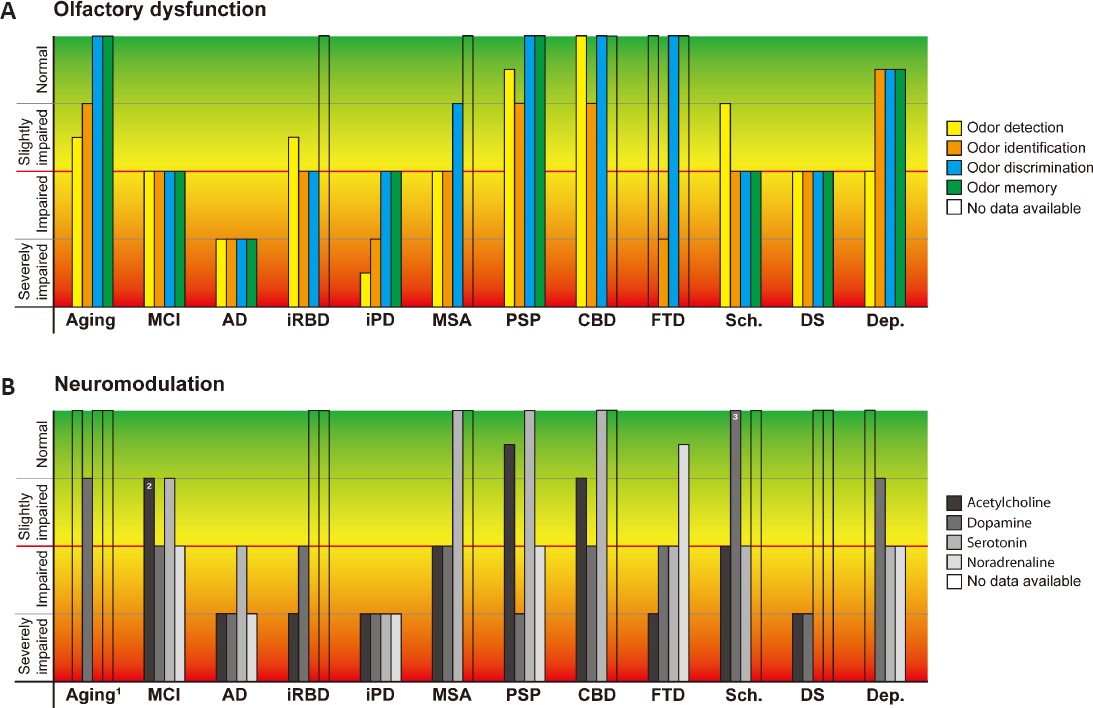Olfactory dysfunction as a common biomarker for neurodegenerative and neuropsychiatric disorders

The sense of smell supports the identification and the safety of food, warns of danger/predators, and plays a key role in mating (Croy and Hummel, 2017; Kondo et al., 2020; Tzeng et al., 2021). Via connection to the limbic system, it supports behavioral adaption and emotions and can detect fear, tears, and happiness in the body odor of others (Croy and Hummel, 2017; Tzeng et al., 2021).
Sensory information is transmitted from the olfactory receptor neurons in the nose via the olfactory bulb (OB) to higher-order olfactory structures including the anterior olfactory nucleus, the piriform and entorhinal cortices, amygdala, hippocampus, orbitofrontal and prefrontal cortices, and nucleus accumbens (Croy and Hummel, 2017; Marin et al., 2018). In the OB, axons from olfactory receptor neurons synapse on the dendrites of OB projection neurons mitral (MCs) and tufted cells in so-called glomeruli (Marin et al., 2018).
Access the article: https://doi.org/10.4103/1673-5374.355756
- 73 views
